Rhabdomonas costata (right), compared to a Cryptomonad (left, Chilomonas sp.) with Maupas-bodies. In contrast to, for example Entosiphon (which is phagotroph) organisms of the genus Rhabdomonas are primary osmotrophs (Aphagea) like Astasia and Distigma. |
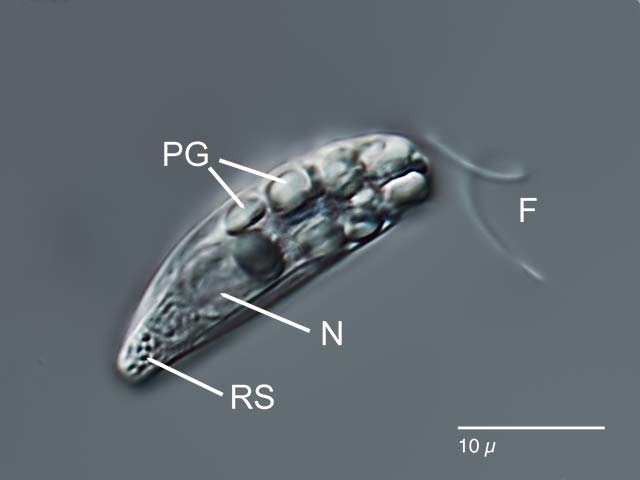 |
| Rhabdomonas costata, crop of the above image. Observed by a light microscope it looks similar to Menoidium, but the cell is not flattened, instead more or less circular in cross-section. The cells are not or only little metabol. The cells have two flagella (flagellum (F)); furthermore recognizable are: nucleus (N); paramylon grains (PG); at the posterior part of the cell, as with Menoidium, there are highly refractive bodies (RS, "refractive spheres"). An eyespot is missing. Obj. 100x |
|
 |
 |
| Rhabdomonas costata: two images of the same specimen, different focus planes. The triangles in the lower image point to one of the 6 "ribs" pf the pellicle. |
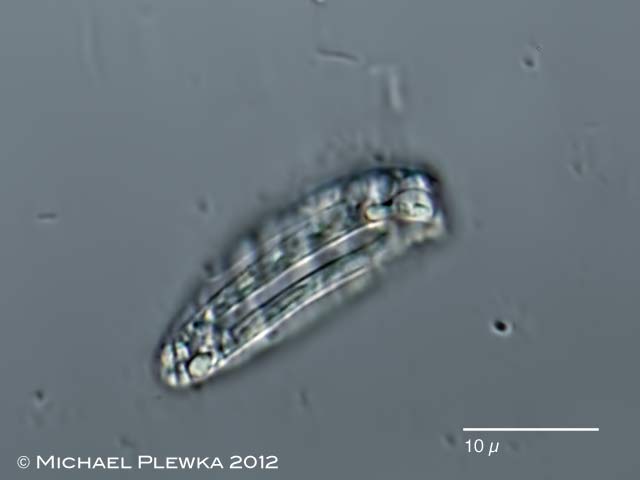 |
| Rhabdomonas costata; pellicle with striae. If the environmental conditions get bad Menoidium as well as Rhabdomonas shed their flagella. |
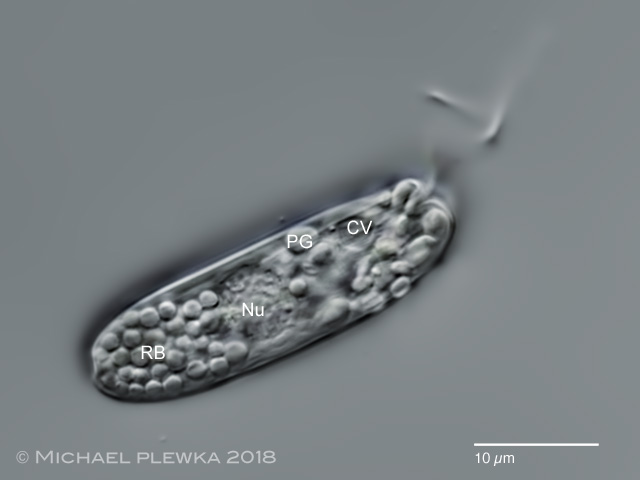 |
| Rhabdomonas costata; another specimen from (2). RB: light refracting bodies; Nu: nucleus; PG: paramylon-grains; CV: contractile vacuole. |
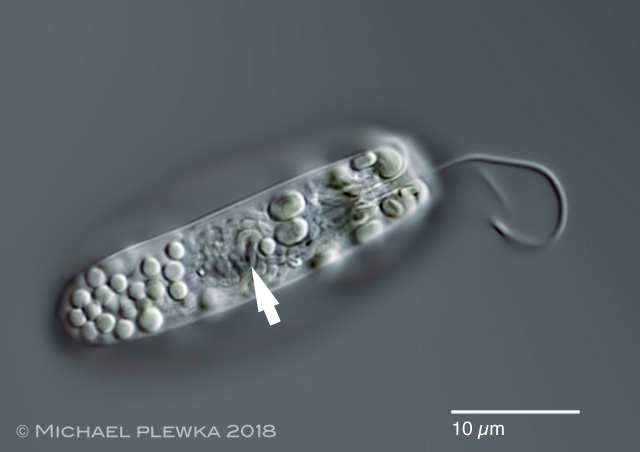 |
| Rhabdomonas costata; same specimen as above, different focus plane. The arrow points to some worm-like structures which are probably mitochondria (2). |
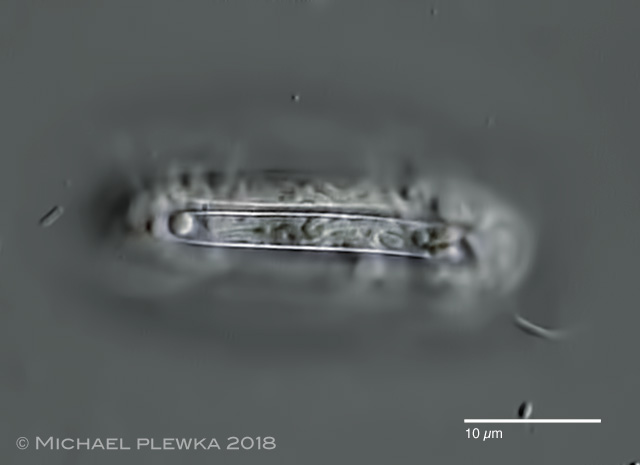 |
| Rhabdomonas costata; same specimen as above, focus plane on one of the 6 ribs of the pellicle. Similar worm-like structures are visible . |
| |
| |
| |
| |
| Location: NSG Schwalmtal, Elmpter Bruch, Utricularia-Tümpel (1); Recker Moor, Graben (2) |
| Habitat: Periphyton (1); Detritus (2) |
| Date: 25.02.2012 (1); coll.: 16.06.2018, img.: 04.07.2018 (2) |
|
|